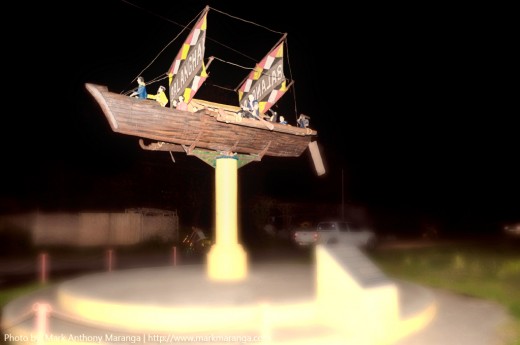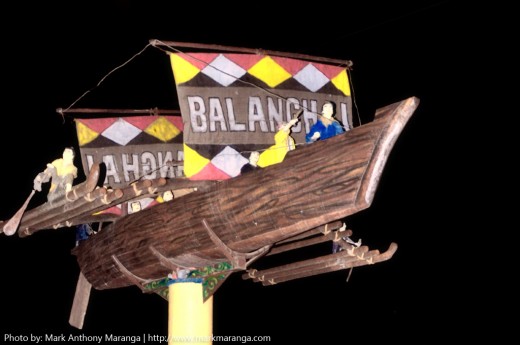That Easter Week of March 29, 1521 as Magellan’s Boat neared that island, two Balanghai Boats approached the ship, with the larger one stood the Chief of the Island of Mazzaua. That was how Pigaffeta the Chronicler of Magellan wrote into his record book 500 years ago.
On July 1976, Antique hunters hit on and discovered the remain of a large wooden boat. It was the first relics of the Balanghai Boat discovered. C-14 carbon dating established that the relics is 1630 years old. Then there were more Balanghai Boats discovered. These were also subjected to C-14 radio carbon tests. The second boat dated back in 1250 A.D. and the third to 900 A.D. These relics were the first wooden watercrafts excavated in South East Asia, similar to the Viking Ship of the North Eastern Europe. At present there are 6 boats still buried in deep silt to the east of Pinamanculan.
These relics were discovered at the eastern edge of swampy flat land surrounding the Pinamanculan Island. Pinamanculan was once an island surrounded by sea water. The area is presently dominated on the abandoned channels and remnants of the Masao River and the remnant of the main branch of the Agusan River.
As to its construction, the Balanghai (Balangay, Butuan) Boat is made of a wooden plank adjoined by a carved-out-plank edge through pins and dowels. Planks were fastened to each other by pegs, and these in turn were counter-pegged through each planks to keep them from slipping out when the hull was under stress. When it was unearth, the relics contained large volumes of Ceramic Ware and Gold items under the Muck. It is known as the oldest pre-hispanic watercraft found in the Philippines.
The construction of the finely built boat was taught from one generation to another. It uses techniques still being used by boat makers of Sibutu Island in Southern Philippines. Made 15 meters long and 3 to 4 meters wide, the Balangay is propelled by sail of Buri or Nipa fiber of padding and is large enought to hold 60 to 90 people. As for the boat of the King, rowers were sometimes seated on both sides of the outrigger to provide speed during some of his journeys.
The Butuan people were people of the sea, living in coastal villages and near rivers. Boats were used for fishing trade, warfare, “piracy” (trade-riding for goods and slaves), travel, communications, and dwelling. With the Balangay’s size, it was also used for cargo and raiding purposes, giving proof that Butuan played a central role in trade in the ancient times.
The Balanghai Boat and the Golden Tara are the two objects that are icons of Butuan’s historic past.
The Balanghai replica that can be found along Jose Rosales Avenue in Butuan is one-third of the original size. It was inaugurated on September 10, 2009 and donated by Judge and Mrs. Severo Malvar and Family.
This page is last updated on


 Mark Anthony Maranga is an Educator-Parent to his 3 Homeschooling Kids. He sells
Mark Anthony Maranga is an Educator-Parent to his 3 Homeschooling Kids. He sells 










Sir Mark, il be attending ADHIKA 22nd National Conference in Butuan on Nov this year, with its theme “Paglawud/Pagsuba: Paglalayag sa Kasaysayan at Kalinangang Pilipino,” am sure our Lakbay-Aral will include all d 8 sites u discuss in this Butuan-blog… please keep posting more… again, Maraming Salamat 😉
whooaaa. my birthplace! i was raised in cebu but i was born i butuan.. you put a smile n my face the moment i saw these. not many people know butuan city…. thanks mark!